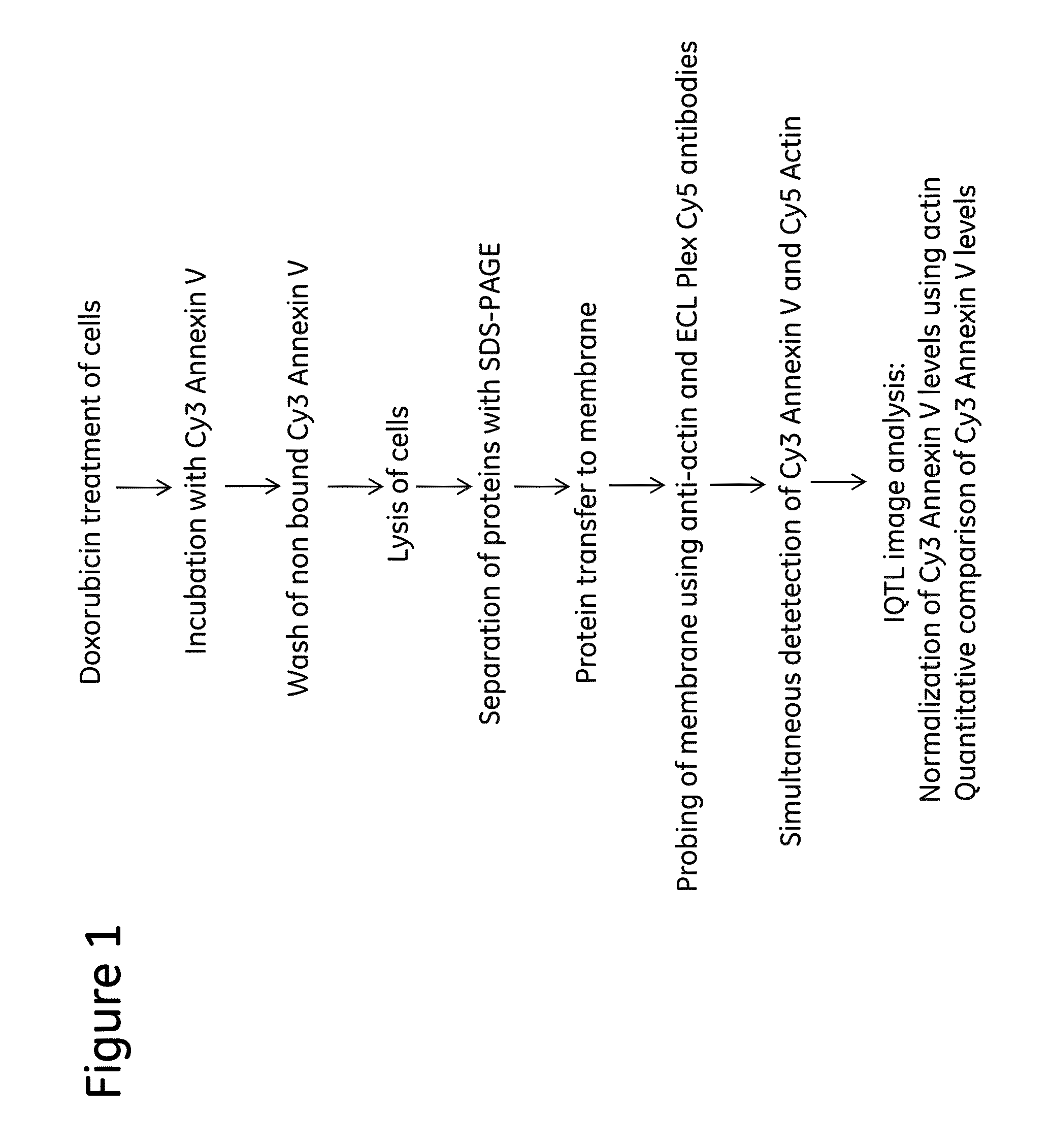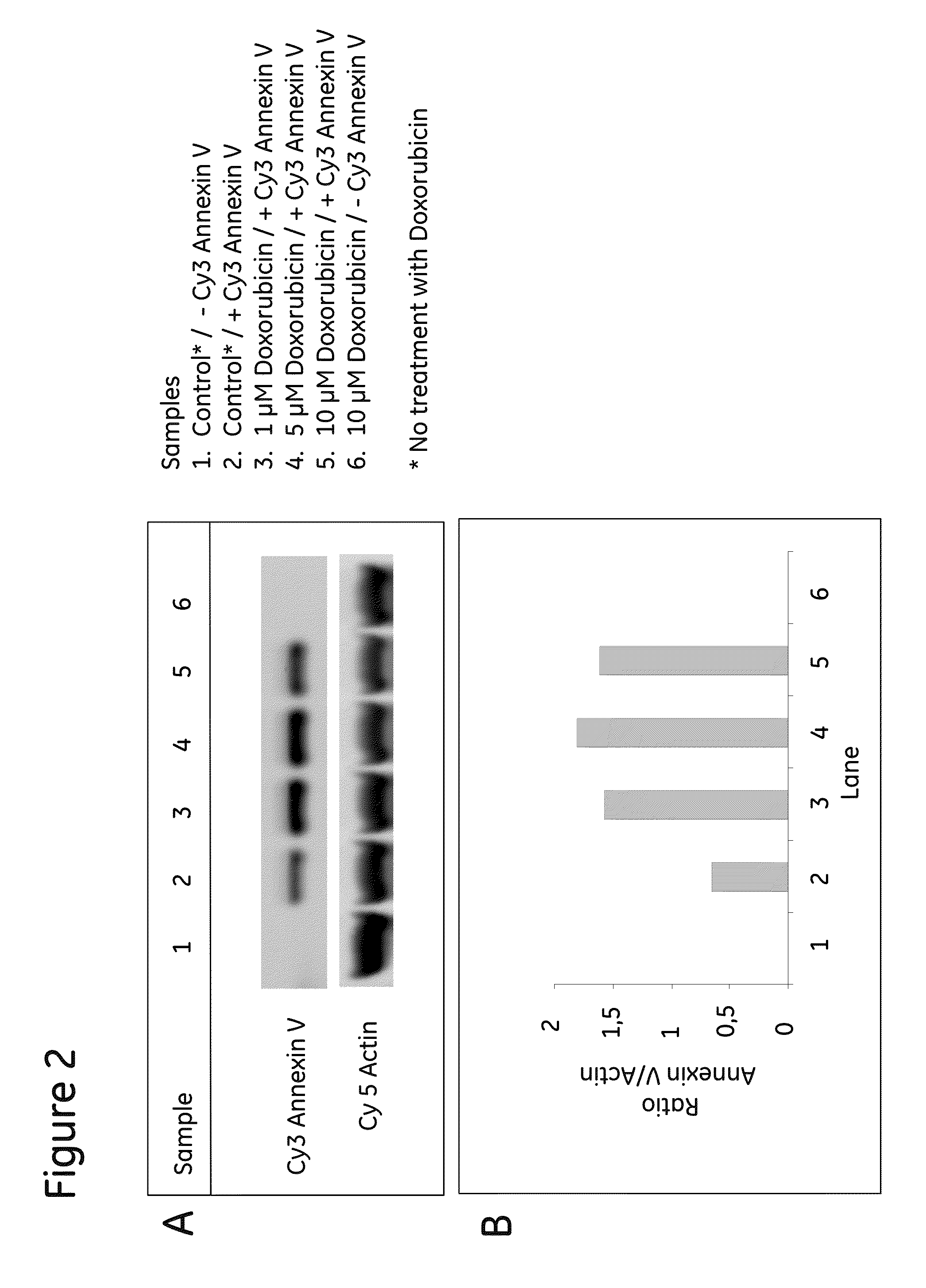Cell binding assay
a cell binding and assay technology, applied in the field of fluorescent cell binding assay, can solve the problems of difficult control of the number of cells in each well, uncontrolled cell proliferation and cancer, and difficulty in ensuring equal sample loading
- Summary
- Abstract
- Description
- Claims
- Application Information
AI Technical Summary
Benefits of technology
Problems solved by technology
Method used
Image
Examples
Embodiment Construction
[0024]Annexin V is a phospholipid binding protein with high affinity for PS used as a marker for apoptosis. Labelled Annexin V, such as Cy3 conjugated Annexin V, is commonly used in ELISA and cell binding assays as well as flow cytometric apoptosis analysis.
[0025]In a specific embodiment the present invention provides a fluorescent Western blotting approach for detection of labelled Annexin V binding to PS in drug treated tumor cells (FIG. 1).
[0026]The cells are incubated with Cy3 labelled Annexin V. Instead of measuring the total signal after cell wash as in prior art, the cells are lysed after wash and subjected to SDS PAGE. Thereafter the gel is subjected to standard Western blotting procedure. The unlabelled proteins in the gel and Cy3 labelled Annexin V (covalent bond between Cy3 and Annexin V) is transferred onto the membrane. The membrane is then probed with primary antibody against house-keeping protein / endogenous internal standard protein reflecting sample load / number of ce...
PUM
| Property | Measurement | Unit |
|---|---|---|
| electrophoretic separation | aaaaa | aaaaa |
| fluorescent | aaaaa | aaaaa |
| ECL detection | aaaaa | aaaaa |
Abstract
Description
Claims
Application Information
 Login to View More
Login to View More - R&D
- Intellectual Property
- Life Sciences
- Materials
- Tech Scout
- Unparalleled Data Quality
- Higher Quality Content
- 60% Fewer Hallucinations
Browse by: Latest US Patents, China's latest patents, Technical Efficacy Thesaurus, Application Domain, Technology Topic, Popular Technical Reports.
© 2025 PatSnap. All rights reserved.Legal|Privacy policy|Modern Slavery Act Transparency Statement|Sitemap|About US| Contact US: help@patsnap.com


